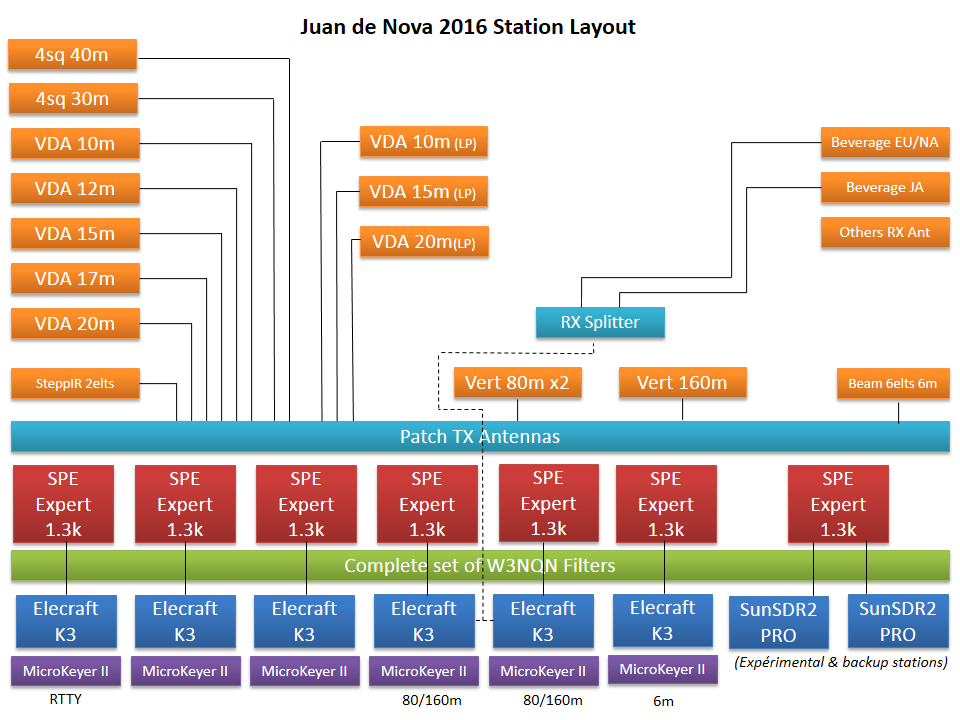Equipment
We’ll have at our disposal 6 x HF stations and a dedicated 6m station. Each one will have an amplifier and a CW/RTTY interface and will be able to communicate in the 3 different modes (CW, SSB, RTTY). Logging software will be Wintest.
In order to maximize the configuration of the location and more specifically the proximity of the ocean we intend to use monoband vertical antennas as well as VDA that have proven to give excellent results during top DXpeditions in the last few years. These kind of antennas are quick to setup even by windy conditions and fits perfectly with the restrictions we have.
All 7 stations will have the same equipment (from the keyboard to the amplifier). It will be much easier to replace any part in case of failure. We want also to have the operator focused on the pile-up, not on trying to get familiar with “new” rig or amplifier.
- 160m: Top loaded vertical built on 26m Spiderbeam pole
- 80m: 2x phased verticals built on 18m Spiderbeam poles & DVA-80 by DX Engineering
- 40m: 4 square array
- 30m: 4 square array
- 20m: 2-elements Vertical Dipole Array built on Spiderbeam 12m pole
- 17m: 2-elements Vertical Dipole Array built on Spiderbeam 12m pole
- 15m: 2-elements Vertical Dipole Array built on Spiderbeam 12m pole
- 12m: 2-elements Vertical Dipole Array built on Spiderbeam 12m pole
- 10m: 2-elements Vertical Dipole Array built on Spiderbeam 12m pole
- 6m: 6 éléments yagi DX Beam
- Long Path: some additionnal VDA & a 2 el SteppIr will be used for long path contacts, expecially for US West coast.
- Radios: K3 by Elecraft & 2 stations SunSDR
- Microphones: ModMic by AntLion Audio
- Interfaces: MicroKeyerII by Microham + cables by GM0OBX
- Amplificateurs: 7 x SPE Expert 1.3 KFA
- RX antennas: bi-directionnal beverages & phased pennants by KD9SV, splitter/filters by F6BEE
- Cable coaxial: 1500m of Airborne 10 low losses cable by Messi et Paoloni (M&P)



